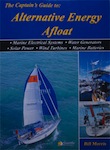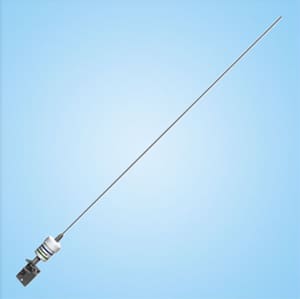A flash of white light broke the darkness as Saltaire motor-bashed into a light gale late one night in the Bay of Panama. Panama City was still 80 miles away, but I thought I’d try getting some local weather information by hailing other cruising boats in the area on the VHF radio.
I called and called, but to no avail. Neither could I pick up any ship radio traffic, which is normally quite active in the approaches to the Panama Canal. That was weird, I thought. I didn’t realize what had happened until I climbed the mast after anchoring at Flamenco Landing the following morning: Where once there was a VHF antenna, there was now just a black sooty hole in the ceramic antenna base. Good thing I didn’t get killed.
A taxi ride to a local electronics shop left me bewildered. I had no idea of the wide assortment of VHF antenna choices facing me, and that was 20 years ago. Imagine now! With prices ranging approximately from $20 to $700 — depending on length, mounting system and type of vessel — the span of choices can at first be intimidating.
Among most cruising boats ranging from, say, 30 to 45 feet LOA, the size of the boat is irrelevant when it comes to installing a VHF antenna. However, with very large vessels, which have much taller masts, signal loss over long lengths of coaxial cable can diminish transmission power. Smaller vessels can get away with the standard RG-58 cable, but larger boats will need to use RG-8 or even RG-213 cable to get a satisfactory signal out. But remember, the heavier the cable, the more the foot-pounds of weight over long lengths. For this reason, RG-8 is the generally accepted compromise for bigger yachts.
Also, finding a high-gain antenna is particularly important for larger vessels. The Tram 1600 offers 6 decibels (dB) of gain, making it a good choice for any yacht, particularly larger vessels. Available for as little as $22, this high-gain antenna coupled with RG-8 or RG-213 coax offers superior performance, particularly for installations on tall masts.
The Tram 1604, priced at only a few dollars more, comes with a stainless mount and Tram’s claim of an attractive design, but offers only 2.5 dB gain. I can’t recall ever commenting on the beauty of a boat’s masthead antenna, which I can barely see anyhow, but I suppose an attractively designed piece of wire sticking out of a small stainless-steel cylinder must be important to some skippers. By the way, all antenna makers claim their products are attractive.
The indisputable leader in marine antenna systems is Shakespeare, which started out manufacturing fishing reels and fiberglass rods, giving them the expertise to expand into marine antennas.
Among the wide assortment of Shakespeare VHF antennas, three are best suited to the typical sailing vessel with a masthead antenna: the 4200, 5241-R and 5215. All three offer 3 dB of gain, and all three are of the same length — 3 feet. Also, the trio use the same PL-259 coax connectors, which you install with your choice of RG-58, RG-8 or RG-213 coax.
The Shakespeare 4200 VHF antenna features a highly polished stainless base and an L bracket to mount just below the masthead. The 5241-R has a slightly thicker element, which is a great benefit in strong wind conditions where we still need the same antenna performance we enjoy in settled conditions.
The Shakespeare 5215 features the “Squatty Body,” a distinctive white cylinder base bearing the Shakespeare logo. The 5215 is arguably the most advanced antenna in its class: It offers extra bandwidth for AIS transceivers, which are now ubiquitous on offshore sailing yachts.
All three of these Shakespeare antenna packages are available at just $100 and are the standard equipment on sailing vessels throughout North America. Whether you choose a Tram, a Shakespeare or another competitor, consider gain, wind resistance and bandwidth before making that decision.
 |
Circumnavigator-author Bill Morris is the author of The Captain’s Guide to Alternative Energy Afloat and is a frequent contributor to Ocean Navigator.

